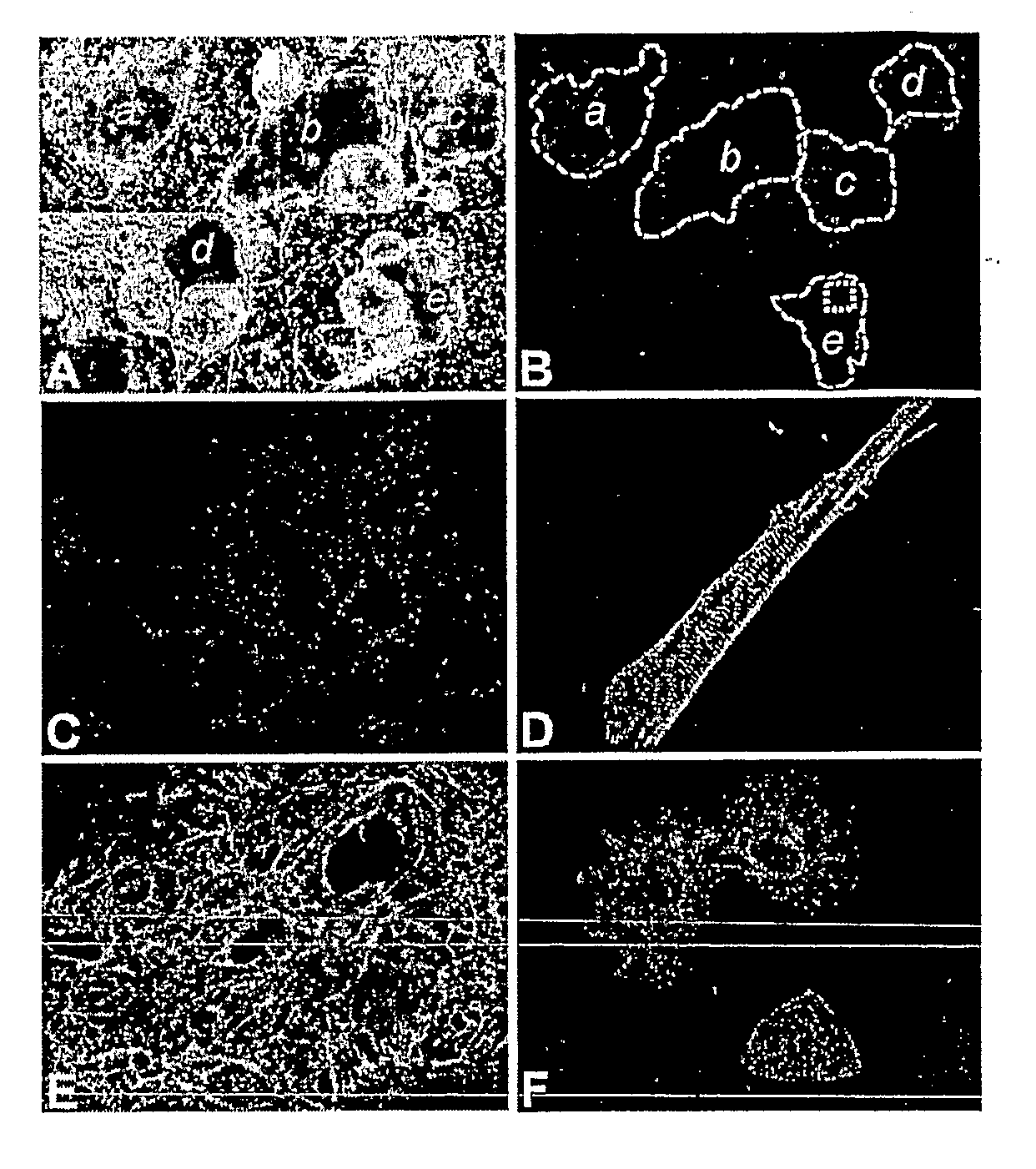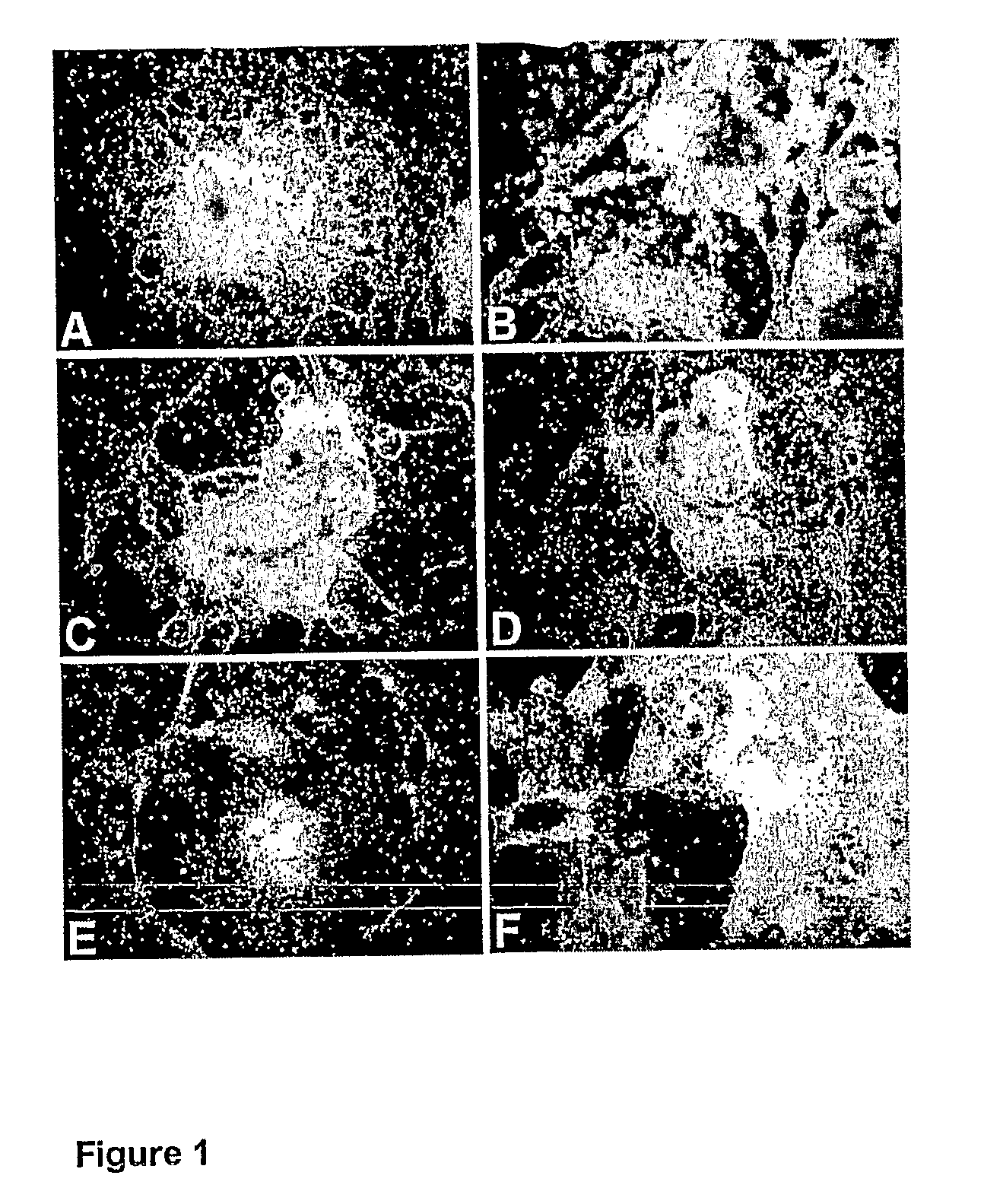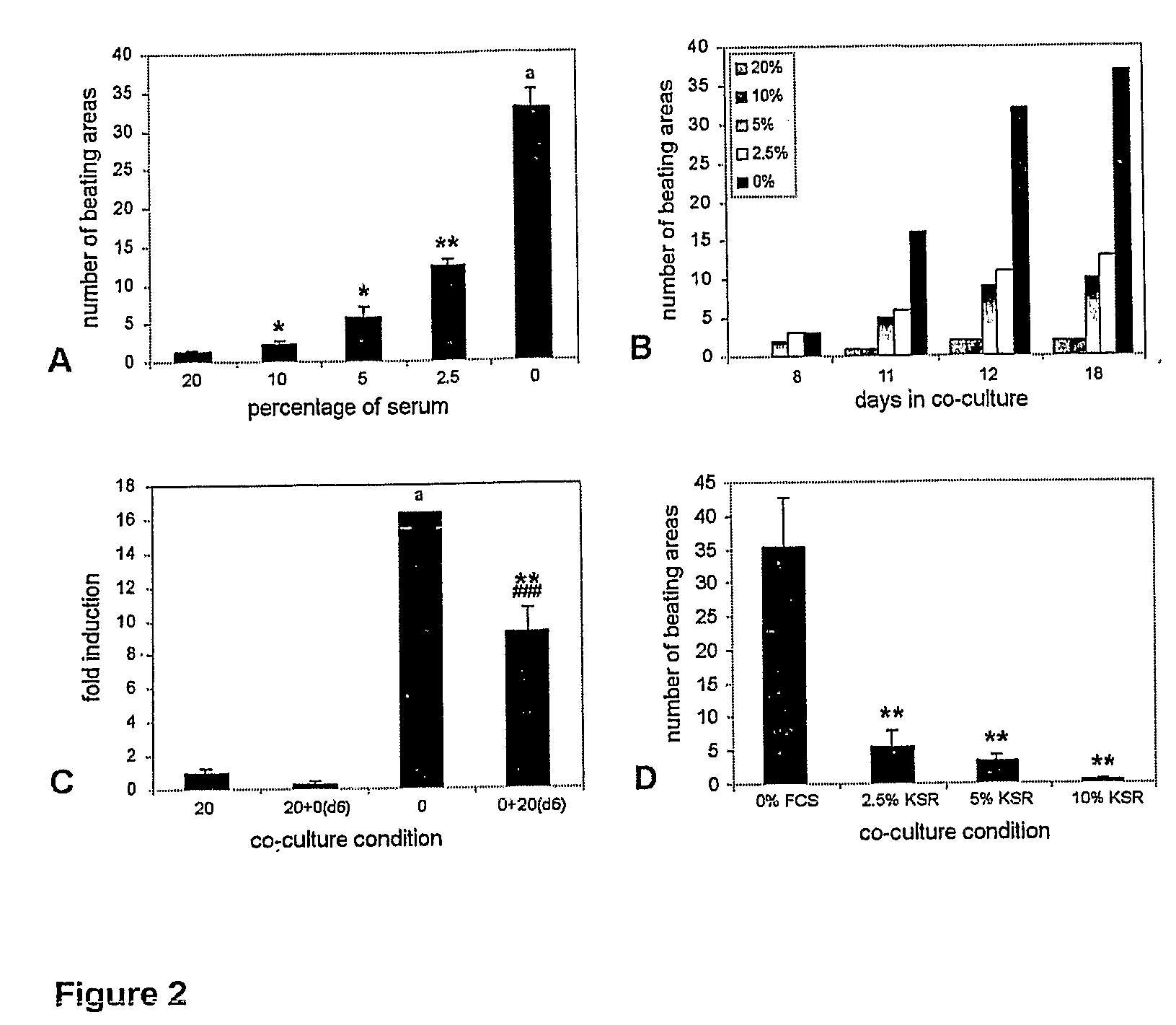Differentiation of Human Embryonic Stem Cells and Cardiomyocytes and Cardiomyocyte Progenitors Derived Therefrom
- Summary
- Abstract
- Description
- Claims
- Application Information
AI Technical Summary
Benefits of technology
Problems solved by technology
Method used
Image
Examples
example
Example 1
Cardiomyocyte Differentiation in the Presence of Ascorbic Acid
1. Materials and Methods
a) Cell Culture
[0100]END-2 cells and HESC lines hES2, hES3 and hES4 cells (passage number between 41-84) were cultured as described previously in Reubinoff B E, Pera M F, Fong C Y et al. Embryonic stem cell lines from human blastocysts: somatic differentiation in vitro. Nat Biotechnol 2000; 18:399-404 and Mummery C, Ward-van Oostwaard D, Doevendans P et al. Differentiation of human embryonic stem cells to cardiomyocytes: role of coculture with visceral endoderm-like cells. Circulation 2003; 107:2733-2740. To initiate co-cultures, END-2 cell cultures, treated for 3 hr with mitomycin C (mit.C; 10 μg / ml), replaced mouse embryonic fibroblasts (MEFs) as feeders for hES cells (Mummery et al (2003) and Mummery C L, van Achterberg T A, van den Eijnden-van Raaij A J et al. Visceral-endoderm-like cell lines induce differentiation of murine P19 embryonal carcinoma cells. Differentiation 1991; 46:51-6...
PUM
 Login to View More
Login to View More Abstract
Description
Claims
Application Information
 Login to View More
Login to View More - R&D
- Intellectual Property
- Life Sciences
- Materials
- Tech Scout
- Unparalleled Data Quality
- Higher Quality Content
- 60% Fewer Hallucinations
Browse by: Latest US Patents, China's latest patents, Technical Efficacy Thesaurus, Application Domain, Technology Topic, Popular Technical Reports.
© 2025 PatSnap. All rights reserved.Legal|Privacy policy|Modern Slavery Act Transparency Statement|Sitemap|About US| Contact US: help@patsnap.com



